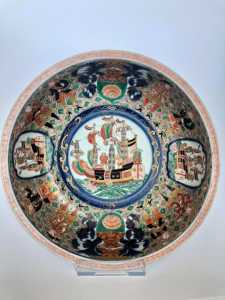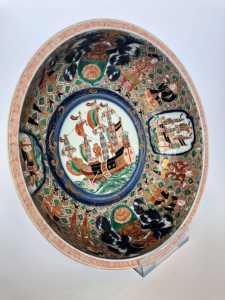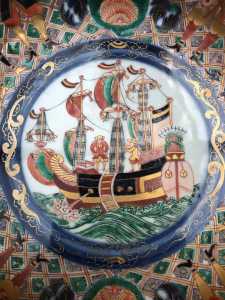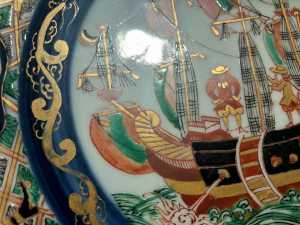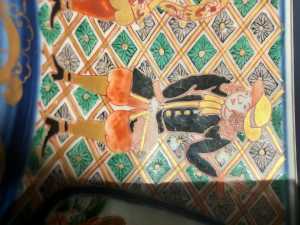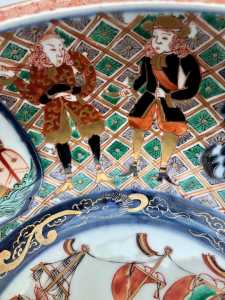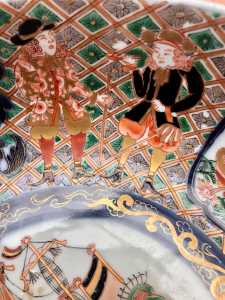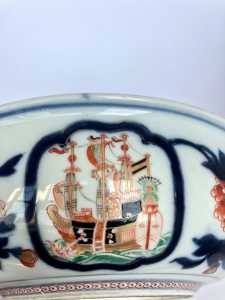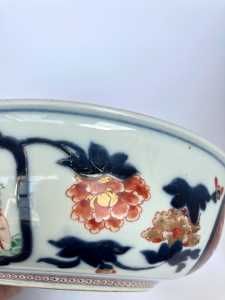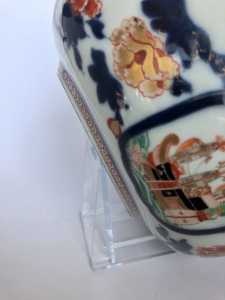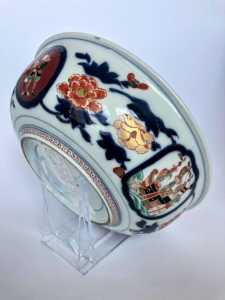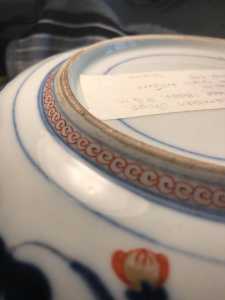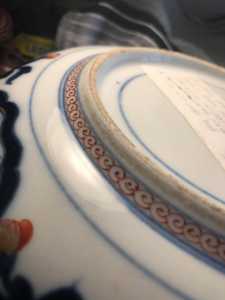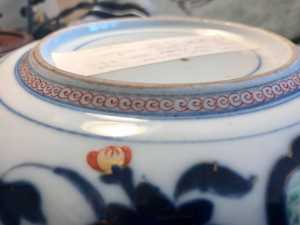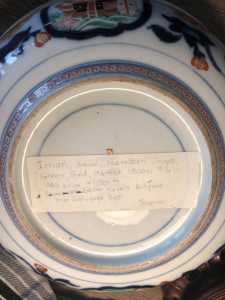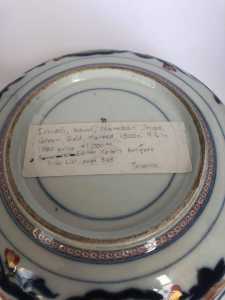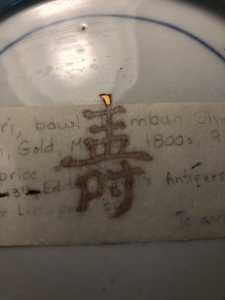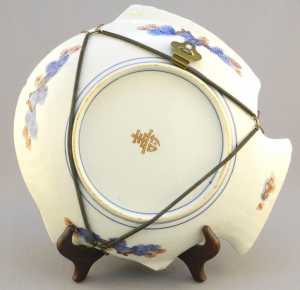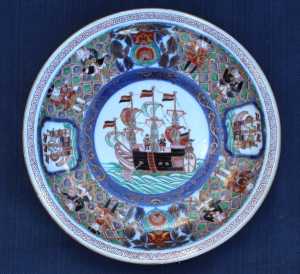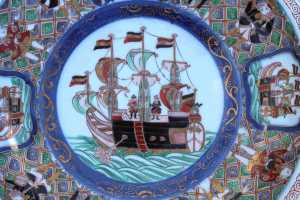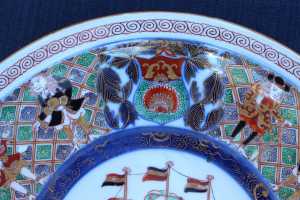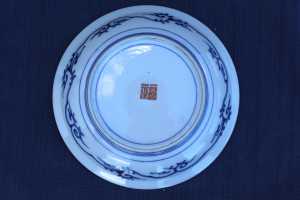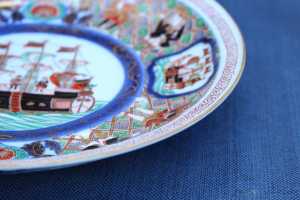The Chinese and Asian Art Forum. For Fans, Collectors and Dealers.
 Basic Rules For the BidAmount Asian Art Forum: Talk about whatever you want. You can even discuss and offer things that are for sale if they are authentic. Maximum image file size per post is 2 MB. Images of 700pxl x 700pxl are optimal if saved at a medium resolution. Be respectful of others and enjoy yourself. Click the YouTube link for a brief tutorial on using the forum. You can also EMBED Videos by cutting and pasting from You-Tube, Vimeo etc.
Basic Rules For the BidAmount Asian Art Forum: Talk about whatever you want. You can even discuss and offer things that are for sale if they are authentic. Maximum image file size per post is 2 MB. Images of 700pxl x 700pxl are optimal if saved at a medium resolution. Be respectful of others and enjoy yourself. Click the YouTube link for a brief tutorial on using the forum. You can also EMBED Videos by cutting and pasting from You-Tube, Vimeo etc.
NOTE: To post an item or add a new post, click open the category title from the FORUM LIST, and CLICK the Blue ADD TOPIC button.
Hi all,
I hope you all are doing well. I've really enjoyed hunting for this pattern, and love having them in my collection. This is the newest bowl I've acquired, hoping it's late Edo/early Meiji. I have concerns about it, however:
1) The underglaze ring around the inner center ship looks really watery and uneven.
2) Some areas of the green and black enamels are crazing/crackling.
3) The foot is oddly trimmed, where it exhibits the Daishoji Imari beveled foot rim, but the glazed and unglazed portions are beveled to the bowl rather than just the glazed foot.
4) Numerous areas of enamel loss and chips.
5) Waves are poorly/hastily done, but also look worse due to enamel loss.
I think enamel loss might have been common in some Chinese porcelain, but I haven't found an example online that exhibited enamel loss or crazing like my bowl does in Japanese porcelain. It's also my understanding that this pattern is heavily faked, so I'm unsure if these characteristics are of age or deceit. I was the only bidder and won it at a relatively affordable price too on eBay. I should also add that when I first handled it, it felt fake, but that was the same feeling I had handling the five-piece Kangxi set I posted earlier, so my radar might be off on that.
Some things I think going for it are the significant wear to gilt on the outside of the bowl where I think it would've been handled more. Also, the mark on the bottom is covered up due to the sticker, but it looks like the generic kotobuki mark. Any help is much appreciated!
Here are the photos:
Kindly,
John
Hello John,
Would like to see a photo of the base, and the foot rim please.
Michael
Hi Michael,
Thanks for looking at the bowl. Here are some more photos of the footrim and base:
I have the small Daishoji book in front of me, and it bears a striking resemblance to #46, but none of the pieces in that book show a foot that is beveled similarly to this bowl. The unglazed portion of the foot rim begins at the black/dark blue line, but there is also an uneven line of glaze on one section that looks like the potter painted on a wheel. Also the footrim was almost pitch black when it arrived, but it cleaned up to what you see. I think that color might've been from a stand rather than being artificial.
Let me know if you need a specific angle.
Kindly,
John
What’s under the label?
Hi Brian,
I'm a little cautious with removing labels, but I tried and the mark appeared after wetting it. It does appear to be a kotobuki mark, which appears on old pieces as well as newer ones. My late 20th-century fish plate has the same mark, although a bit differently styled.
Here's the mark on this bowl:
Here's the mark on my newer fish plate:
John
Hi John,
I am not an expert on the subject, but after comparing your bowl to some Meiji pieces I have, your dish seems fine for Meiji. Just my opinion...
Todd
take it with a grain of salt
Hi Todd,
Thank you for taking the time to compare it with yours. I think I'm more comfortable with that rather than it being Edo period. I didn't have any other similar pieces to compare it to (other than the bowl in my profile picture), but I would love to grow my own black ships collection.
Kindly,
John
@bartholin The later ones are called Gold Imari, might Google that and see when they started, I love your bowl with the red headed Dutchmen. Sharon
Hi Sharon,
I'm glad you liked this bowl! I think it was a fun find. I'm a surprised no one else bid on it. Also, I was under the impression that later copies of this pattern could also be made in China very recently, and done remarkably well. I showed the bowl in my profile picture to some folks on the gotheborg forum and they seemed to think it was late 20th century Japanese or even Chinese.
I'm still trying to learn how to date Edo period pieces from Meiji or later.
Kindly,
John
Hello John,
Thanks for the additional photo's of the base. Very nice item you have there. From the way the foot rim is cut and the overall quality my opinion is that the plate is not Daishoji. As you know from your experience on other forums attributing items as Daishoji is fraught with difficulties not only in the west but within Japan it's self due to the lack of documentation, reference books etc. Most items I have seen that have a more definite attribution to Daishoji the foot rim is cut a different angle and the white glaze that runs down the inside edge of the the foot rim to the flat central area has a slight sea green color. And generally the over all decoration is of a very high standard that is a class above the run of the mill. Not trying to suggest your plate is just run of the mill, it is very attractive. From the photo's think your plate is more likely to be Arita in origin. The forth photo of the base the foot rim appears to be rounded at the top pretty certain that's an indication of the Arita Kilns. As far as dating well that's another minefield. The Edo period lasted 264 years and for most of that period foreigners were banned from setting foot in Japan. Prior to the Edo there was some trade between Japan and the west mainly the Portuguese. There was some trade with the Dutch in the early 1600's from the Island of Dejima. This trade is know as the Nanbam Trade there is lots of information on this trade on the internet. Foreigners were often depicted on these export wares with very large noses and red hair. This trade ran from the 1500's to perhaps the first 20 years of the 1600's. I don't think your plate dates from this period due to the colors and the very dark and flat blue under glaze blue . The depiction of foreigners in this way was revived in the very late Edo, through the Meiji and later in export wares, so in my opinion your plate dates to the 19th or early 20thc. The way the mark is done would seem to indicate more 20thc than 19th. This type of thing is very popular and is still made today, and as you have found out elsewhere copies are being made in China but I don't think you have to worry about that with your plate. Of course I could be wrong I am only what you might call book learnt you really need to have physically handled or at least seen many items in the flesh to give definite opinions.
Michael
Hi John,
I like it!
I have a black ship plate that Peter appraised as early 19th c. and I'm happy to share photos of it if it would help, but you have such examples too so not sure if it would help in dating your bowl. The foot rim on your bowl is different than my plate but then again it's a bowl. The details and colors seem to be similar but you're right about the waves. The gold scrolls next to the dragons are also a little different.
Thanks for sharing and good luck!
SW
Thank you Michael,
You've given me a wealth of information, and I appreciate your insight, as always. I'm a bit disappointed that the bowl isn't Daishoji Imari, nor Edo period, but it's been a great learning experience either way. I can certainly see the lower quality in my bowl compared to some online. I'll keep your pointers in mind in the future as I hunt for one! You are right, there are so few resources available for this area.
John
Hi Steve,
I'd love to see your plate! Always love seeing examples to help me learn, and it would be especially helpful given Peter's evaluation.
I'm currently trying to compile a database of "black ships" pieces that are dated by experts to help with comparative research, so I'd also appreciate it if I could store yours, too.
Kindly,
John
Hi John,
Here you go!
The foot rim seems whiter and smoother than your bowl with a little grit on the inside, and the plate has one spur mark where the character mark is.
I took those photos outside, so the plate is actually not as bluish as it appears here.
I inherited this from a friend years ago and I had assumed it was modern of mass production, so it was a delightful surprise to get Peter's opinion!
-Steve
@steve Is that crest for an individual? I Googled crest for VOC and did not find that one, so maybe personal arms of the owner? Lovely example. Sharon
Thanks for visiting "The BidAmount Asian Art Forum | Chinese Art"
If you sell on eBay, or have a shop feel free to post images and descriptions and links.
Check back often for discussion about the latest news in the Chinese art and antique world. Also find out about the latest Asian art auctions at Sotheby's, Christie's, Bonhams and Tajans.
Auction results for: fine porcelain, ceramics, bronze, jade, textiles and scholar's objects. As well as Japanese, Thai, Vietnamese and other Asian cultures.
Thank you,
Peter Combs
Topics and categories on The BidAmount Asian Art Forum | Chinese Art
Kangxi vases, Kangxi dishes and chargers, Kangxi ritual pieces, Kangxi scholar's objects, Qianlong famille rose, Qianlong enamels, Qianlong period paintings, Qianlong Emporer's court, Fine porcelain of the Yongzheng period. Chinese imperial art, Ming porcelain including Jiajing, Wanli, Xuande, Chenghua as well as Ming jades and bronzes.
The BidAmount Asian Art Forum | Chinese Art
A free Asian art discussion board and Asian art message board for dealers and collectors of art and antiques from China, Japan, Korea, Thailand, Cambodia, Vietnam and the rest of Asia. Linked to all of the BidAmount Asian art reference areas, with videos from plcombs Asian Art and Bidamount on YouTube. Sign up also for the weekly BidAmount newsletter and catalogs of active eBay listing of Chinese porcelain, bronze, jades, robes, and paintings.
The art of calligraphy - and for the ancient Chinese it certainly was an art - aimed to demonstrate superior control and skill using brush and ink. Calligraphy established itself as one of the major Chinese art forms during the Han dynasty (206 BCE - 220 CE), and for two millennia after, all educated men were expected to be proficient at it.
The Museum’s collections of Asian art span nearly five millennia and encompass the cultures of China, the Himalayas, India, Japan, Korea, and Southeast Asia. In 2007, the Museum launched an initiative to create dedicated galleries for the collection, beginning with a gallery for the arts of Korea ...
Chinese art is full of symbolism, in that artists typically seek to depict some aspect of a totality of which they are intuitively aware.
China Online Museum is the finest online museum of Chinese art. It features Chinese calligraphy, painting, ceramics, bronzes, carving, and other artworks.
Chinese Ceramics & Works of Art. Overview Upcoming auctions Contacts Auction results ... Christie’s sales of Chinese ceramics and works of art showcase centuries of Chinese history. Held throughout the year in London, New York, Paris and Hong Kong, they attract a wide audience of collectors and connoisseurs vying for pieces as diverse as ...
Explore Asian Art Week. Contact the Specialist Department. Chinese Paintings ... Senior Specialist, Head of Sale. [email protected]. Tel:+1 212 641 5760. Bid in-person or online for the upcoming auction:Fine Chinese Paintings on 10 September 2019 at New York. Bid in-person or online for the upcoming auction:Fine Chinese Paintings on 10 ...
Discover an abundance of must-see art from all corners of a vast continent at Christie’s NY Asian Art Week. From contemporary classical and Chinese paintings to works with exemplary provenance from the Art Institute of Chicago, our Rockefeller Paza galleries will be full of ancient treasures and contemporary masterworks in a salute to the vibrant arts of Asia.
Sold to benefit The Art Institute of Chicago’s Asian Art Acquisition Fund, the sale features 84 lots with a focus on Ming and Qing porcelains, and offers a rare insight into the taste for collecting Chinese ceramics and works of art in the Midwest from the end of the 19th century through the 1980s. Highlights include two Wanli wucai garlic-head vases, a Qianlong mark and period, blue and ...
Specialist, Chinese Paintings, Christie's London Dr Malcolm McNeill is a Specialist in Chinese Paintings at Christie’s, based in London. He previously worked as an assistant curator of the Chinese collections and the Victoria and Albert Museum in London, as a researcher at the British Museum, and as a translator and tour guide at the National Palace Museum in Taipei.
The Christie's Education 2020 Conference: The Chinese Art Market 18 Jun 2019 Christie’s Education is delighted to announce our first international academic conference in Asia which will take place in Hong Kong from 26-27 November 2020 at the Hong Kong Convention and Exhibition Centre and will run in parallel with Christie’s Hong Kong Autumn Auctions.
The summer Chinese Art sale in Hong Kong will feature works of art from several private collections, including Qing porcelains and textile from the collection of the legendary Chinese art dealer A. W. Bahr (1877–1959), fine gilt bronze Buddhist sculptures from an old Hong Kong collection, an East Asian collection of Qing dynasty wine cups and jades, and a Japanese collection of Song ceramics ...
Sotheby's Chinese Works of Art Department holds two auctions each year in London, New York, Hong Kong and Paris.
Chinese Art - View Auction details, bid, buy and collect the various artworks at Sothebys Art Auction House.
With more than 340 Chinese works of art dating from the Neolithic to the Republic periods, highlights of this sale include a selection of Qing Imperial monochromes from the collection of Arnold and Blema Steinberg, early ceramics from the Art Institute of Chicago and Chinese porcelain and works of art from the collection of Henry Arnhold.
Results: Sotheby's Asia Week achieved $52.4 million in six strong auctions, exceeding pre-sale estimates. With 76.5% of lots sold and 60.3% of lots surpassing high estimates, the Asian art sales at Sotheby's indicate continued collector interest in the finest works of art from China, India and and the Himalayas.
Today's sale of Important Chinese Art will proceed as planned with sessions at 10 AM and 2 PM EDT. Sotheby's will be monitoring the weather conditions throughout the day and will be available to coordinate alternative bidding options should conditions make it difficult for clients to attend the auction in person.
Bonhams Chinese Art department is renowned for offering the finest works of art representing the richness and breadth of China's artistic heritage, particularly Imperial porcelain, white and spinach green jades, cloisonné and Buddhist art. Specialised international auctions are held globally, including London, Hong Kong and San Francisco.
Bonhams : Chinese Works of Art We use cookies to remember choices you make on functionality and personal features to enhance your experience to our site. By continuing to use our site you consent to the use of cookies. Please refer to our privacy and cookie policies for more information.
Bonhams Fine Art Auctioneers & Valuers: auctioneers of art, pictures, collectables and motor cars. We use cookies to remember choices you make on functionality and personal features to enhance your experience to our site. By continuing to use our site you consent to the use of cookies. ... Chinese Art (US) General enquiries
Bonhams : Fine Chinese Art We use cookies to remember choices you make on functionality and personal features to enhance your experience to our site. By continuing to use our site you consent to the use of cookies. Please refer to our privacy and cookie policies for more information.
Bonhams Fine Art Auctioneers & Valuers: auctioneers of art, pictures, collectables and motor cars Bonhams : Asian Art We use cookies to remember choices you make on functionality and personal features to enhance your experience to our site.
Bonhams are international auctioneers of fine Chinese and Japanese art. We specialise in rare Imperial and Export Chinese ceramics and works of art, as well as Japanese ceramics, fine and decorative works of art from the Neolithic Period to the 20th century. View on map
Bonhams Fine Art Auctioneers & Valuers: auctioneers of art, pictures, collectables and motor cars. We use cookies to remember choices you make on functionality and personal features to enhance your experience to our site. By continuing to use our site you consent to the use of cookies. ... Asian Art Bonhams. Work. 22 Queen St.
